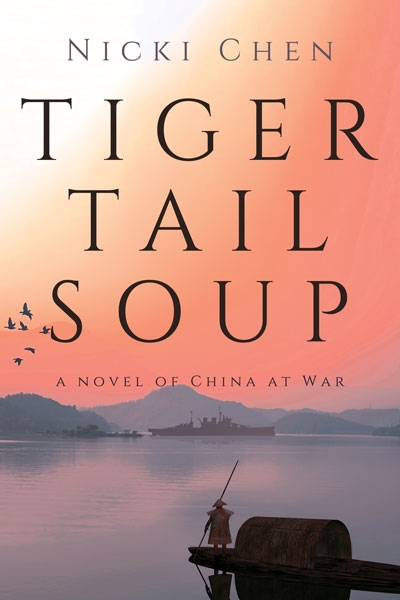One thing I like about blogging is all the interesting, unexpected connections that have come from it. One of my most recent connections was with an architectural student from Manila. Lucas contacted me a couple of weeks ago about some information he’d found on my blog. He wanted to incorporate it into his study of the Manila Chinese Cemetery.
The blog post he was referring to was something I posted on November 3, 2013, Manila’s Chinese Cemetery. The post was based on my memories of a visit to the cemetery way back in what was probably 1973. I’d searched my photo albums and found a faded photo of my husband standing next to the statue of his great-grandfather, the primary founder of the Chinese Cemetery.
That photo and my words were far from adequate when trying to describe a cemetery that is like no other in the world. I borrowed some excellent photos from other blogs. But Lucas Mangulabnan did me one better. He and his associate put together a video. It’s an excellent video. I encourage you to watch it. Here’s the link: https://www.youtube.com/watch?v=VphelVDivNY&feature=youtu.be
The particular portion of my post that interested Lucas was near the end. I wrote that our family had stopped at the beautiful Chong Hock Tong Temple on the cemetery grounds to look around and to find some shade. Along the side of the temple there was an engraved stone tablet attached to the wall. It was a list of rules set down from the founding of the cemetery.
The strange thing was, most of the rules were meant to make lavish displays of wealth impossible. But now, more than a hundred years later, that’s exactly what the cemetery is known for. Instead of being buried in graves marked with a simple tombstone, the “residents” of the Chinese Cemetery are interred in marble and granite “houses” with balconies, kitchens, chandeliers, sinks with hot and cold running water, chairs, tables, bars and flush toilets. (See my blog post and/or Lucas’ video.)
Here are some of the rules that my husband translated for me from the Chinese:
No one can be refused burial on the land.
The poor will be given land free of charge.
The rich should be frugal and simple in their burial, and the burial should conform to Chinese traditions. These traditions are:
- There should be no obstruction between the grave mound and the sky.
- One plot for each body
- Grave site design should be simple and dignified.
- Family members who wish to be buried together can own up to two plots.
- To discourage displays of opulence, the unit price of lots beyond two are set on a geometric progression.
I’m surprised I took notes that day, even more surprised that I found them so many years later and after multiple moves. It’s I good thing I did, because that beautiful temple has recently been razed to the ground. I didn’t know about it until recently, thanks to watching Lucas’ video.
One more thing: After don Carlos Palanca Y Tan Quien Sien died, his son took his body back to China to the village of his birth. In 1983, we visited his grave. Because he was an ambassador and also the richest Chinese in the Philippines, his grave was more than a simple marker. But it could not compare with the mausoleums in the cemetery he founded.

 Check out my novel, Tiger Tail Soup. It’s available in bookstores, also on Amazon, barnesandnoble.com and AppleiBooks
Check out my novel, Tiger Tail Soup. It’s available in bookstores, also on Amazon, barnesandnoble.com and AppleiBooks







What a tragedy that the cemetery has been destroyed – it was a major piece of Manila’s history. Also, I can’t imagine that the relatives of those buried there would be too happy – where are their ancestors now?
Mabel said it best. Thanks for sharing. Fascinating!
I’m glad you stopped by to take a look, Lani.
So heartening to hear your post had an impact on someone else. Amazing. Such a grand mausoleum and you were lucky to have been able to have a look around so many years ago. And very fortunate of you to have saved that photo of your husband and his great-grandfather. Certainly a priceless memory.
Some of the tourist-like things we do are more enjoyable afterwards. I have to admit that walking around a cemetery on a hot day was not entirely pleasant. But you’re right, there was lots of luck involved in this post: lucky I saved the photo and also my notes on my husband’s translation of the rules, and lucky I was able to find them.
Interesting video Nicki. Thanks for sharing it.
It was a good video, wasn’t it? I was so glad the young man allowed me to share it.
Interesting. Each culture has it’s traditions. I never really thought about that.
Even more interesting, Kate, is when a family is influenced by several traditions. I went to a funeral once in the Philippines for a Chinese-Filipino. They had a procession with a loud-speaker on top of a car playing Filipino pop music. They burned paper money and paper cars and houses Chinese style and said Catholic prayers before laying him to rest in the Manila Chinese Cemetery.
Now that was some funeral!
What a lovely photo of a very elaborate Chinese mausoleum. Had no idea of these traditions. How does it compare to other Manila cemeteries?
The Manila Chinese Cemetery is totally different from any other cemetery in Manila. I think there’s nothing quite like it in the world. It’s too bad they tore down the temple. It was quite beautiful.
It’s interesting how your earlier information helped the young videographer and how he was able to share information with you. It’s a small world sometimes.
That’s what I thought, Paddy. I was surprised to hear from him and learned some new things from his video.
It’s nice to know that your blog has such an impact.
I love the rules for burial. Very egalitarian.
Unfortunately, L. Marie, those egalitarian rules were ignored over the years. My husband was angry too see it.